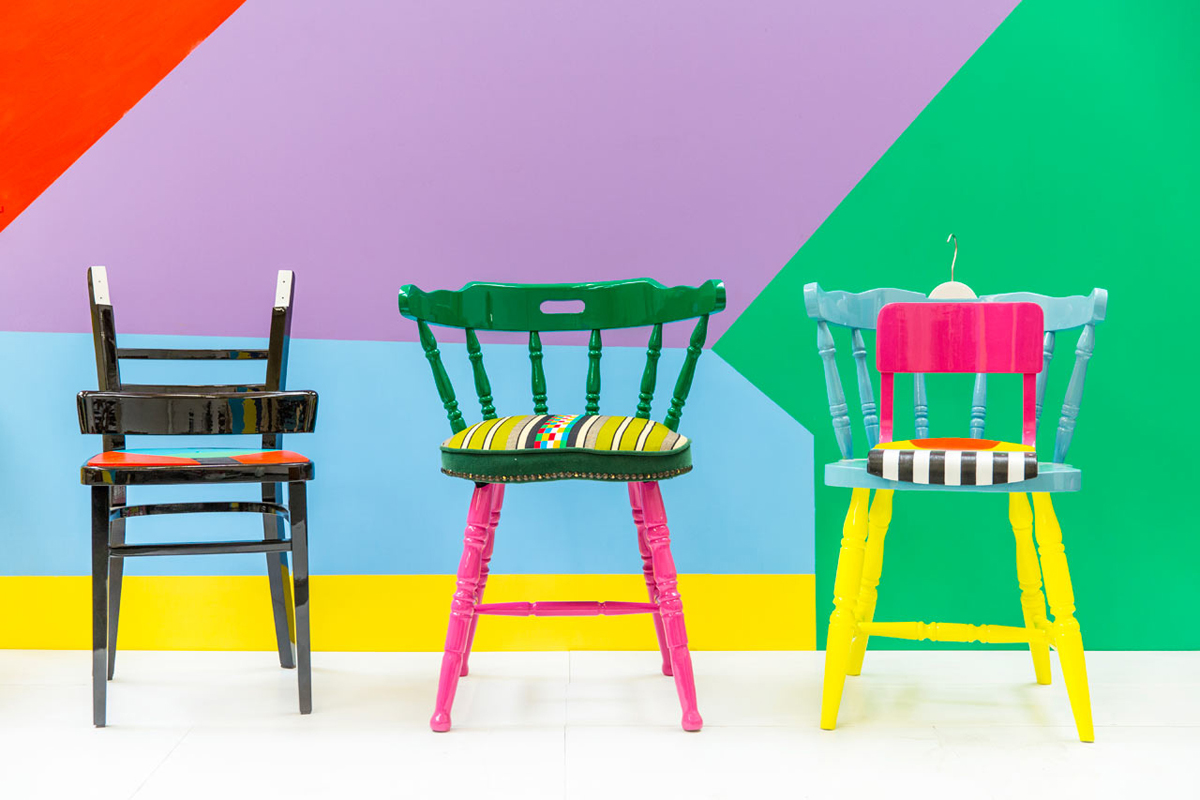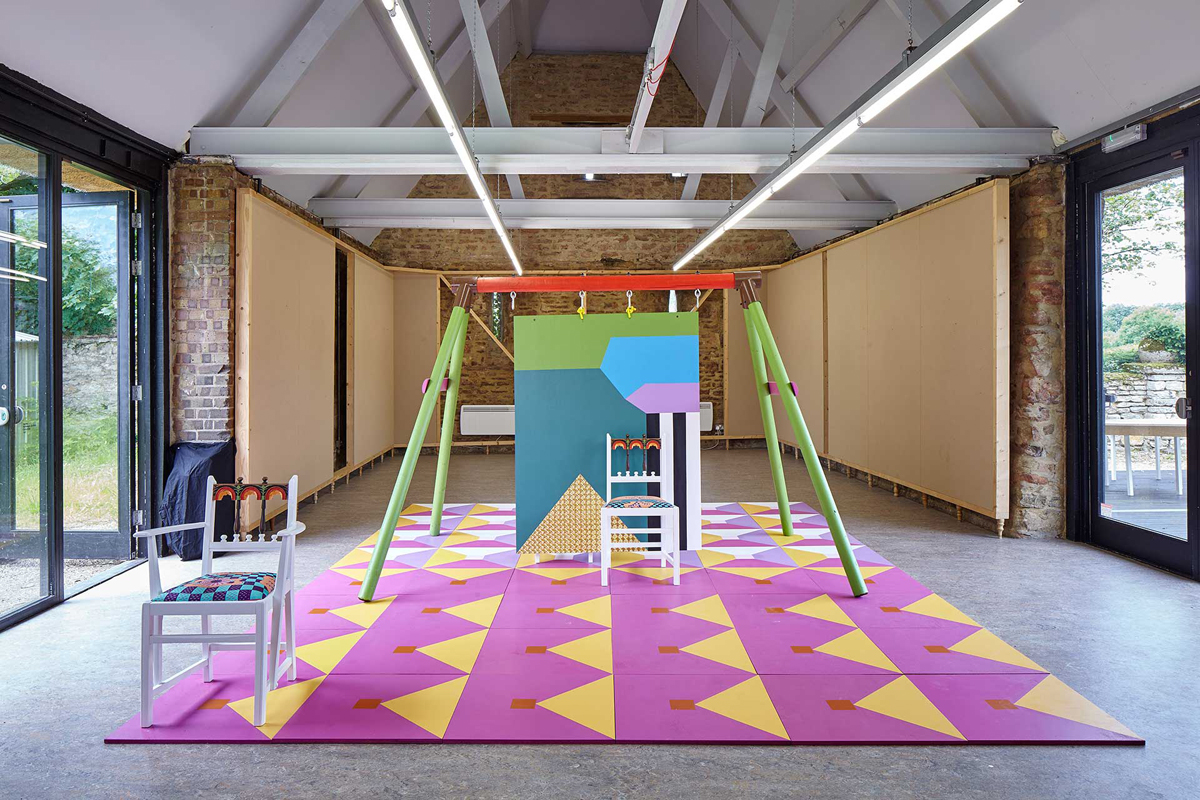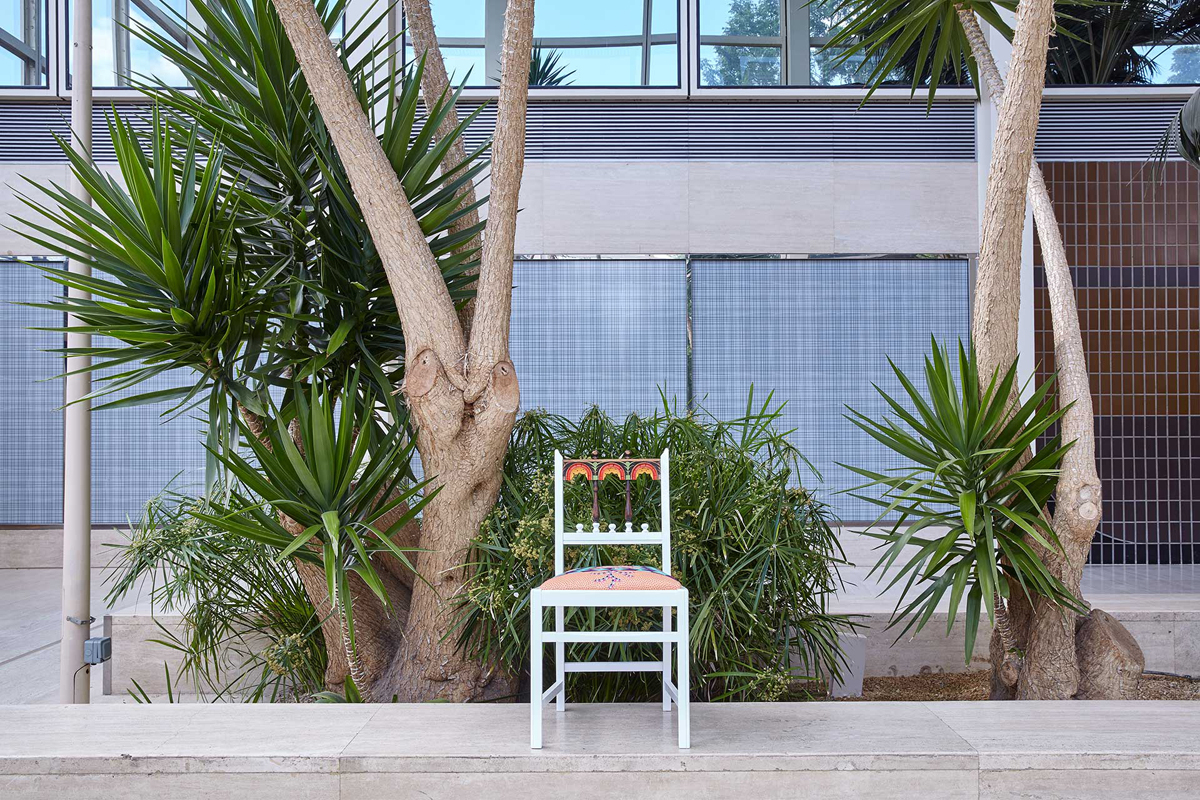Interview: Artist and Designer Yinka Ilori
The passionate Nigerian-Brit shapes a sense of belonging into conceptual chairs

“When I went to Nigeria for the first time I saw my grandmother and she spoke no English at all, but she spoke to us through what she was wearing,” says artist/designer Yinka Ilori. “Her clothes were really beautiful and empowering—and she looked really happy. I wanted to take a bit of that from her, so I studied my culture and my language and identity and what it meant to be a black British in London. I wondered, ‘What does a sense of belonging mean to people who are from West Africa, who come to London for a better life, and how do they keep in touch with their culture?’”
In his desire to understand his own heritage and place in the UK as a first-generation Brit born to Nigerian parents, Ilori tapped into what would become his immediate future: turning historical narratives into wonderfully whimsical chairs. Sometimes the chairs tell a story of status and hierarchy which Ilori witnessed firsthand, other times they’re a manifestation of old Nigerian parables passed down to him from his mom and dad. But the chairs are consistently colorful, a reflection of his African roots and own inviting personality, and always deeply expressive—an attribute that allows his work to toe the line between fine art and furniture design.

After catching Ilori’s talk at this year’s Design Indaba conference (where he creatively broke up the lecture by asking the audience to come on stage for a Nigerian dance party), we caught up with him in London to learn more about his work.

What’s your particular attraction to chairs?
Well, it started off sort of by accident. I was inspired by Martino Gamper and his project to make 100 chairs in 100 days. In year two at uni we basically recreated that project; to create a new chair with a new narrative. I got this chair from a mate of mine who works in a pub, and then a friend of mine who’s a bit of a naughty boy with the law gave me his chair. So they were both these different chairs with different backgrounds and different people who lived different lives. I merged these two together and gave it a new narrative, a new story and a new life. That’s when I fell in love with the idea of re-telling narratives through furniture. Because when you sit on a chair, you don’t know what that chair’s been through or the story it has. You just sit down and trust the chair to make you feel comfortable. But if you knew what that chair had been through, would you have ever have sat on that chair?

Where do you source the chairs?
When I first started, about six years ago, I would be on a bus or I’d be walking, and I would see chairs scattered all around London. So I’d get off the bus and pick up the chair; I was like a chair hoarder. My friend actually had some he was going to give to me, but I prefer to find them in unusual places—like in a council estate or a really posh place in Chelsea. It’s interesting to see the people that leave those chairs behind and why they’ve left them there. For me, it’s nice to unravel that person’s story and try and work out who’s had that chair, what kind of life they were living, and then merge those chairs together so it’s different.

Tell us about some of the themes that run through your work.
In Nigeria I saw lots of rich people, and I saw lots of people who were poor. In London you don’t really get that, there’s help from the government. But in Nigeria there’s no such thing as government help. You’re on your own, just begging. And that was hard for me to see because I think, like, “How can you have 10 cars like a Range Rover and a Porsche and then someone’s on the side of the street begging for money?” So in my work I really like to discuss the idea of upper class and lower class, and status and hierarchy. That’s something I’m really passionate about and I like to tell that narrative through my work.
I used these chairs as a catalyst to tell the stories of these five people, so sometimes it’s more about the emotion than the chair itself
With my last collection I did a piece called “If Chairs Could Talk” and that was based on five characters from school. There was one guy who was really good at football but he was interested in doing illegal things like selling drugs. He wanted fast money and a fast life, yet he was almost becoming a professional football player for one of the best teams in London. Then you had other guys; one from Nigeria, and because he didn’t speak English and didn’t wear Supreme or Gucci, he was bullied. He was wearing clothes that his mom could afford from a charity shop, and he was really struggling with his identity and how to fit in. Then another guy who was really talented but the teacher didn’t believe in him because he was destructive and loud, and the teachers thought, “There’s no point in investing time in him, he’s already a failure.” Sometimes we need that bit of push from someone who really does actually care about us. I used these chairs as a catalyst to tell the stories of these five people, so sometimes it’s more about the emotion than the chair itself.

And some stem from Nigerian parables?
Growing up my parents were strict, really strict. We couldn’t go out late at all; I mean bloody hell! [Laughs] We were really a religious family and they had really strong moral values about what we should be like, and how we should not let the family down. Culture was important to my parents, and they always spoke to us in riddles about being good and not being bad, being positive, not being envious of people, how to work hard. These were taught to us through words of wisdom, these parables. I remember growing up thinking, “Whoa, Dad’s talking a lot of rubbish,” because I didn’t understand then the power of those parables.
Then I was at uni thinking, “I’m on my own now, Dad’s not around, Mum’s not around, I’m living on my own.” And those parables came back to me. I remember using them in my life everyday and I wanted to share them with people because I think they made me the person I am today—because where I was from I could have gone a different route in life, I could have gone way off the rails because it was so easy and so acceptable to be in trouble with the law. Or you could go down the straight path and get an education and get a degree and be someone. Those parables helped me focus a lot more, so I wanted to share them with people who needed that help, who needed that inspiration.

What do you hope people take away from your work?
I love retelling narratives through an object because it’s such an easy medium to question peoples’ identity and get conversations sparking. My work is quite funny, quite humorous, and also colorful and vibrant. So I think my work can be quite comfortable for someone who may not believe in what I’m talking about—it’s a nice way to ease someone in. I hope my chairs make people happy, and smile. And then once they know a bit more about it, hopefully they can connect with it and see bits of my narrative in their own life.
Yinka Ilori regularly hosts participatory workshops in his East London studio; follow him on Twitter for the upcoming dates
Images courtesy of Yinka Ilori and Design Indaba; studio portrait by Karen Day












